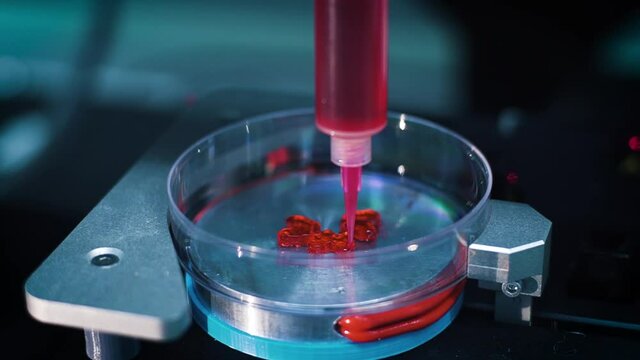
3D organ bioprinting with polymers : all you need to know
In the context of bioprinting, 3D printers use bioinks to print 3D organs which are prototypically similar to real organs. These 3D-printed organ-like structures have the potential to be used in vivo as organ transplants or in vitro in the drug discovery process. Materials for 3D bioprinting must meet specific criteria; they should be biocompatible, non-immunogenic, non-toxic, and chemically stable, and should not show an adverse immune response after host implantation. This article is a brief overview of the significance of the common polymers used in 3D bioprinting.
1. Alginate: Alginate is a naturally occurring anionic polymer typically obtained from brown seaweed. It has good biocompatibility including low toxicity, rapid biodegradability, chemical gelling, and non-immunogenicity. However, it is not usable for the cultivation of stem cells because its composition deviates too much from a true physiological extracellular matrix (ECM)(1).
2. Polylactic acid (PLA): PLA is biodegradable hydrolysable aliphatic semicrystalline polyester produced through the direct condensation reaction of lactic acid. It is biodegradable, biocompatible, and has no toxic fumes (2).
3. Polyhydroxy alkenoate (PHA): PHAs are a family of polyhydroxy esters of 3-, 4-, 5- and 6-hydroxyalkanoic acids produced in nature by numerous microorganisms including bacteria through the fermentation of sugars or lipids. PHAs are efficiently degraded in the environment. In addition, they are biocompatible, brittle, and tough in nature (3).
4. Polycaprolactone (PCL): Polycaprolactone is a biodegradable polyester with a low melting point of around 60 °C. PCL is biocompatible and non-toxic and has been used in the biomedical field for more than 70 years, from sutures to tissue and organ replacement by 3D printing (4).
5. Polyethylene glycol: Polyethylene glycol is a polyether compound derived from petroleum with industrial and pharmaceutical uses. It is non-biodegradable and has poor mechanical strength (5).
6. Polyether ketone: Polyether ether ketone (PEEK) is a tough, semicrystalline high-performance thermoplastic polymer pertaining to the polyaryletherketone (PAEK) family; it has good thermal and mechanical properties. It is highly biocompatible, strong, and elastic (6).
7. Polyglycolic acid (PGA): PGA is a biodegradable aliphatic polyester which is a versatile building block assuring high-performance and sustainable bioplastic applications. It has good biocompatibility. Upon PGA biodegradation, glycolic acid is metabolized to CO and water, both of which are non-toxic (6).
References
1. Lutolf M, Hubbell J. Synthetic biomaterials as instructive extracellular microenvironments for morphogenesis in tissue engineering. Nat Biotechnol. 2005;23(1):47–55. doi: 10.1038/nbt1055.
2. Chen Q, Liang S, Thouas GA. Elastomeric biomaterials for tissue engineering. Prog Polym Sci. 2013;38(3–4):584–671. doi: 10.1016/j.progpolymsci.2012.05.003.
3. Wang Y, Ameer GA, Sheppard BJ, Langer R. A tough biodegradable elastomer. Nat Biotechnol. 2002;20(6):602–606. doi: 10.1038/nbt0602-602
4. Wang L, Zhao Y, Yang F, Feng M, Zhao Y, Chen X, et al. Biomimetic collagen biomaterial induces in situ lung regeneration by forming functional alveolar. Biomaterials. 2020;236:119825. doi: 10.1016/j.biomaterials.2020.119825.
5. Lin Y, Boccaccini A, Polak J, Bishop A, Maquet V. Biocompatibility of poly-DL-lactic acid (PDLLA) for lung tissue engineering. J Biomater Appl. 2006;21(2):109–118. doi: 10.1177/0885328206057952.
6. Song R, Murphy M, Li C, Ting K, Soo C, Zheng Z. Current development of biodegradable polymeric materials for biomedical applications. Drug Des Dev Ther. 2018;12:3117. doi: 10.2147/DDDT.S165440.



